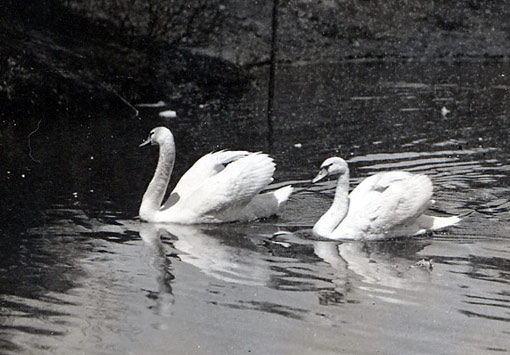Throwback Thursday: Lancelot and Elaine
February 15, 2017
Lancelot and Elaine
The original pair pictured in 1936, and the current pair in 2017. They have changed several times over the years. In both photos, Lancelot and Elaine can be seen in Lake LaVerne. Also pictured is the swan float that released the birds to the lake.
The year is 1935. It’s Veishea week. A swan float suddenly appears. Filled with flowers and maidens, it emerges out of smoke and floats across the water. Then it releases four swans.
This is the story of resident lovebirds, Lancelot and Elaine. While these swans are not the original swans released on the lake, they have been a beloved tradition of Iowa State ever since their arrival in the early 20th century.
Lake LaVerne is home to the beloved Lancelot and Elaine. Lake LaVerne was built in 1910 and funded by LaVerne W. Noyes with the intention of making his alma mater more beautiful. Read more about Lake LaVerne here.
There have been several Lancelots and Elaines throughout the history of Iowa State, and usually they have been mute swans. There was a pair of trumpeter swans from 1995 to 1999. But the trumpeter swans proved to wander too much and could sometimes be aggressive. There were reports of them wandering as far as Parks Library. They were later returned to their natural habitat. Today, Lancelot and Elaine are mute swans, and were added in 2003.
Mute swans can live up to 20 years in the wild, and even up to 40 years in captivity. Swans will generally mate for life, however this is not necessarily true for mute swans. Mute swans have been known to have up to four mates and will even pick and choose which ones to mate with. Normally the Lancelot and Elaine have been male/female pairings. There were even cygnets (baby swans) born in 1944, 1970, and 1971. Today though, Lancelot and Elaine are both female. This is to help maintain the swan population in Iowa.
For any suggestions for future publications of Throwback Thursday, send an email to [email protected].







